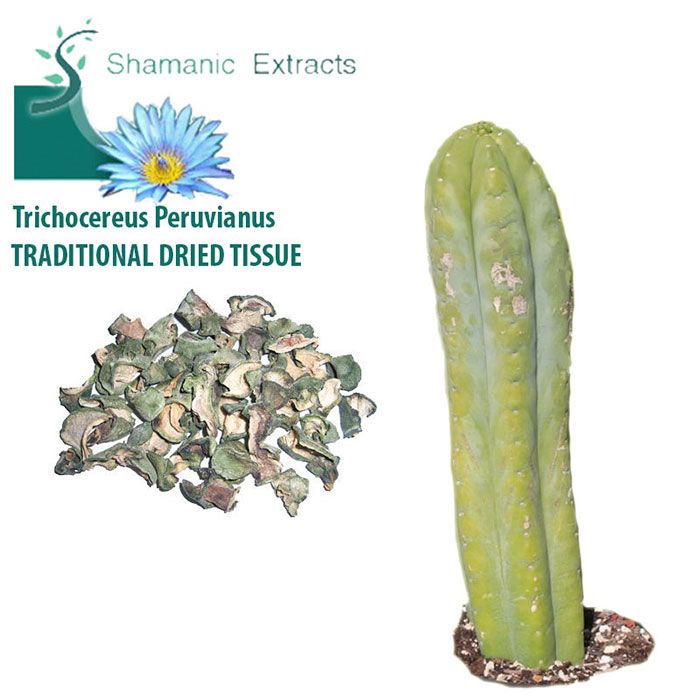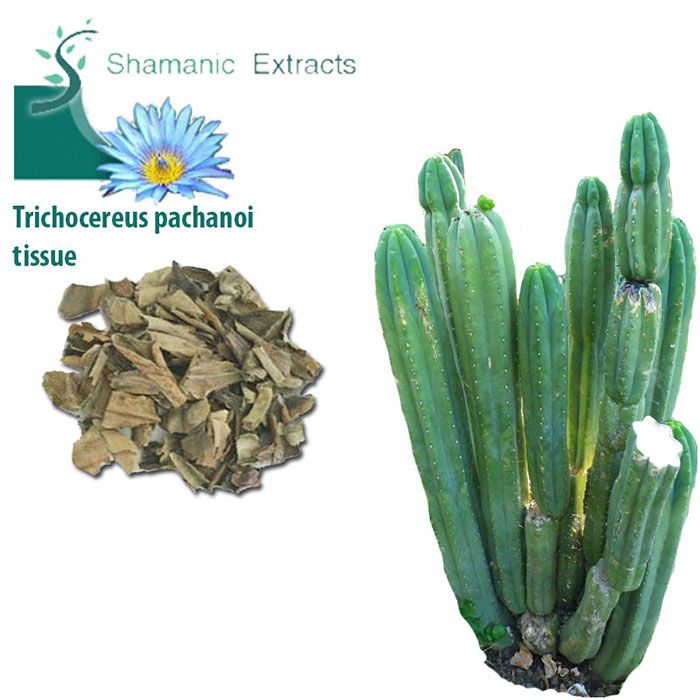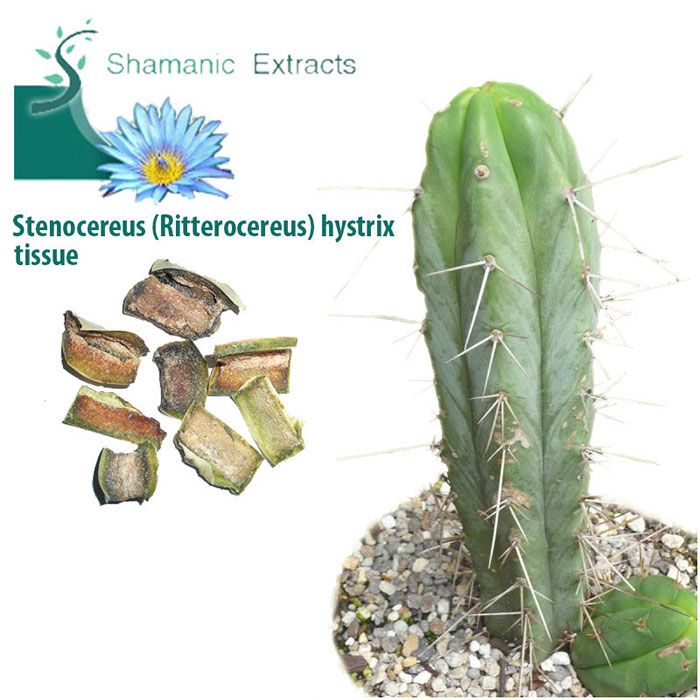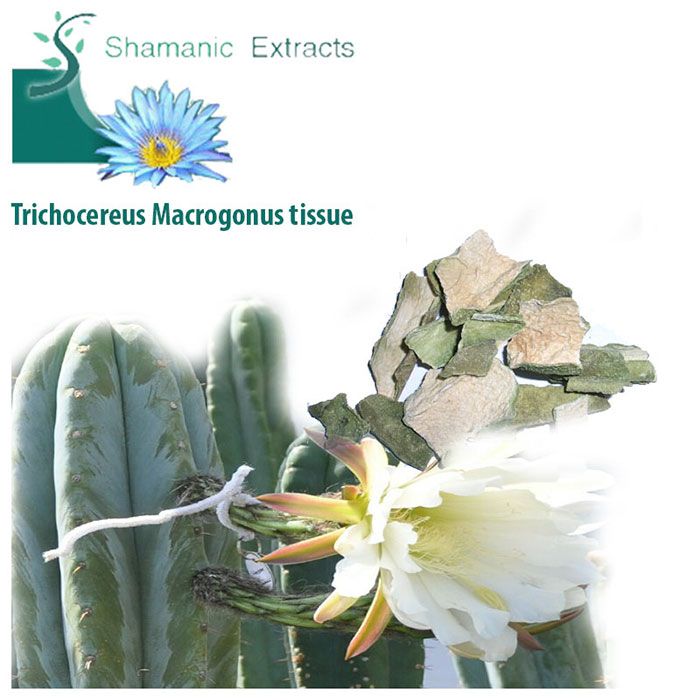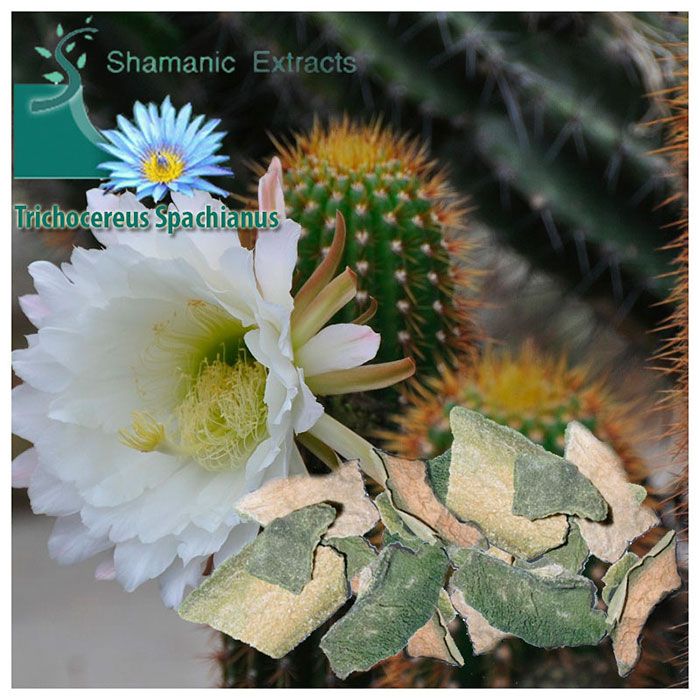Why People Seek Traditional Cactus Tissue
People are often interested in dried cactus for ethnobotanical study, collection, or ceremonial use. These plants have a long history among indigenous cultures in the Andes and Mexico. For many, the interest lies in the ritual use of the cactus and the connection to natural traditions.
The Cactus Species We Offer
1. Stenocereus (Ritterocereus hystrix)
This rare cactus comes from dry regions of Central America and the Caribbean. It’s less common in modern collections but known in some cultures for its traditional use. The tissue is thick and dark when dried, with a rugged outer layer.
2. Trichocereus Macrogonus
Closely related to the more familiar Peruvian Torch, Macrogonus is a fast-growing columnar cactus with high mescaline potential. When dried, it becomes leathery and fragrant, often with a bluish-green hue. Its traditional use traces back to the highlands of Peru and Bolivia.
3. Trichocereus Pachanoi (San Pedro Cactus)
San Pedro is one of the most well-known traditional cacti. Native to the Andes, Pachanoi has been used in spiritual and healing ceremonies for thousands of years. The dried tissue is light in color and slightly sweet in scent.
4. Trichocereus Peruvianus (Peruvian Torch)
Peruvian Torch is popular for both ceremonial use and botanical interest. It’s a fast-growing cactus with a bluish stem. The dried tissue is often fibrous and dense, showing years of natural growth. It’s been used in traditional contexts much like San Pedro.
5. Trichocereus Spachianus
Spachianus is native to Argentina. It’s less talked about but still holds traditional value. The dried tissue tends to be lighter and thinner, with a soft citrus-like aroma. While it may contain lower mescaline levels than the others, its role in South American plant culture remains important.
How Dried Cactus Is Prepared
Drying cactus tissue involves slicing the outer green flesh into thin strips and letting them air dry away from direct sun. This method helps preserve the alkaloids without degrading them. Once dried, the tissue can be kept for long periods in a cool, dark place.
Sourcing and Ethics
All our dried cactus tissue is sourced with care and respect. We work with growers who follow sustainable practices and honor the traditions behind these plants. We do not promote misuse, and we encourage customers to respect the laws in their area.
Final Thoughts
Dried cactus tissue offers a link to a long history of cultural and spiritual traditions. Whether you’re a collector, researcher, or just curious, it’s important to approach these plants with respect and care.
You can find all the species listed above in our webshop. Each comes labeled and ready for responsible use.

![Dried cactus tissue refers to slices or chips taken from mescaline-containing cacti, then dried for preservation. These cactus pieces are traditionally used in various cultural and ceremonial settings. Drying helps retain the cactus’s alkaloids, especially mescaline, and makes it easier to store or transport. Why People Seek Traditional Cactus Tissue People are often interested in […]](https://shamanic-extracts.com/wp-content/uploads/sites/124/mescaline-cactus-tissue.jpg)
